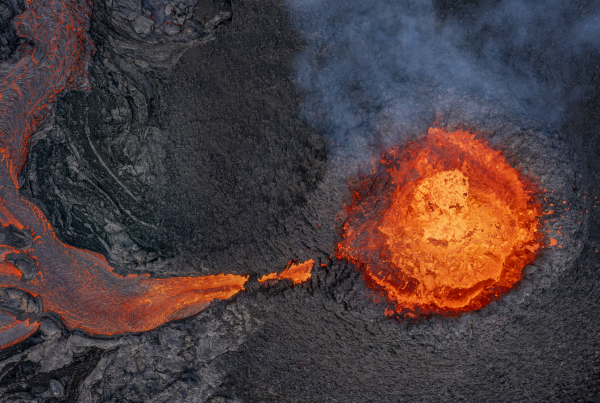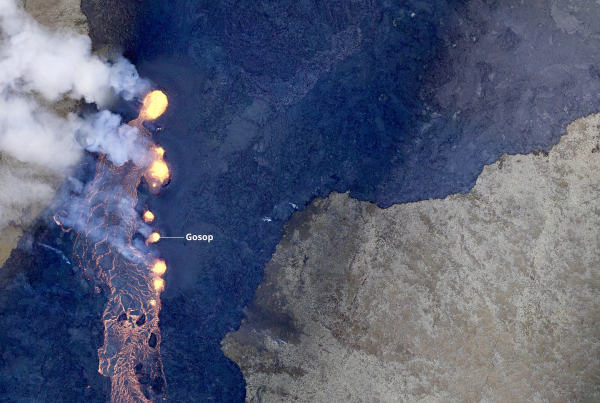
The Fagradalsfjall/Geldingadalir eruption did end in late Septmeber 2021. This was clearly indicated by a rather long absence of faint but continuous seismic low-frequency tremors that accompany any release of magma onto the surface of the earth. In December, the eruption was formally declared as over – to be on the safe side.
However, it was already evident by the end of September as well as in October that an in-flow of magma from a deep-seated magma reservoir exerted pressure on the rigid crust in and close to Mt. Fagradalsfjall. On December 21st, a very lively period of earthquakes suddenly started. Thousands of seismic events followed the initial burst of activity, of magnitude up to 4.9. Interpreted from scientific data, the unrest is caused by magma forcing its way along crustal fissures in the vicinity of the regional dyke (magma-filled fissure) that formed in the winter of 2021 and fed the volcanic fissure that was active from March to September. The total volume of extruded lava from that bout of volcanic activity is 150 million cubic metres (about 5 sq. km).
Many tectonic earthquakes were also registered farther to the east of the new unrest area – as well as close to Grindavík in the west – triggered by the present dyke formation. The depth of the loci of earthquakes near Mt Fagradalsfjall has been decreasing for some weeks and it seems that magma is already at a minimum depth of about 1.5 km. The magma volume on the move is estimated to be about half of the magma volume in the older dyke. A volcanic eruption could occur without much warning but it is also possible that the magma intrusion stays within the crust without surfacing.
Words by Ari Trausti Guðmundsson
Photo by Ragnar Th of the eruption at Fagradalsfjall in 2021



